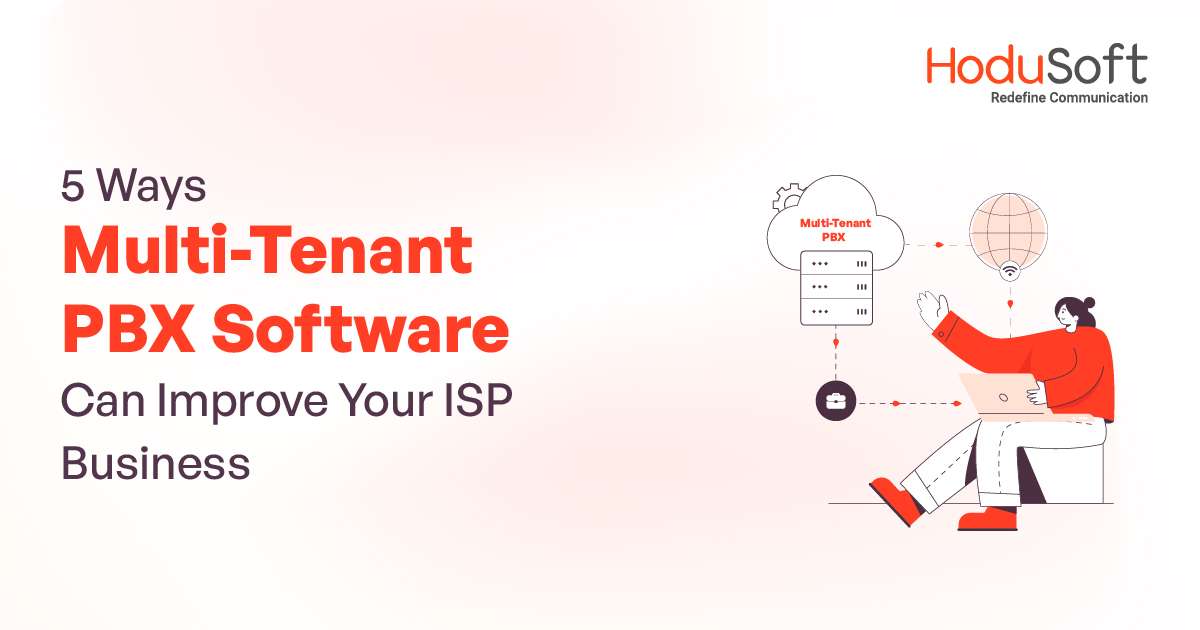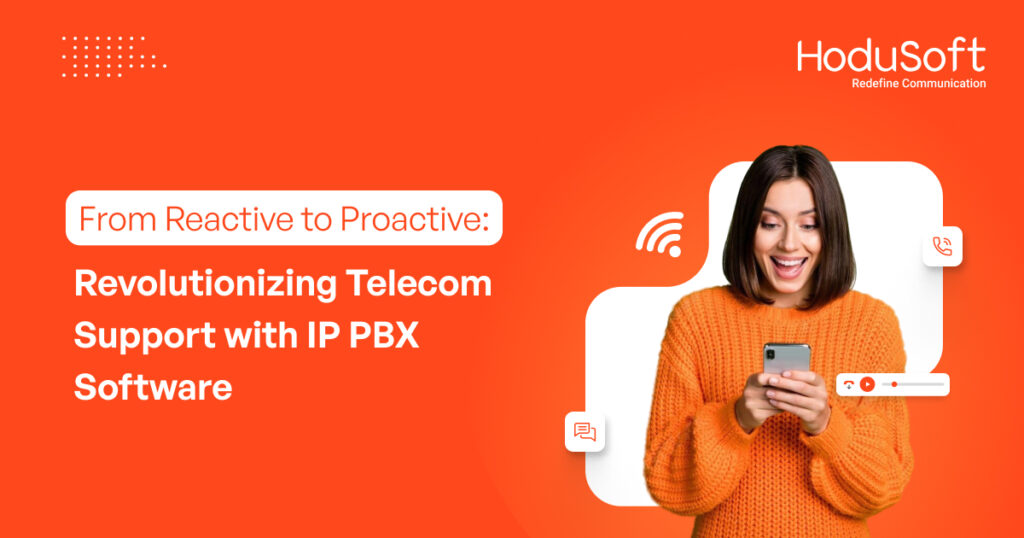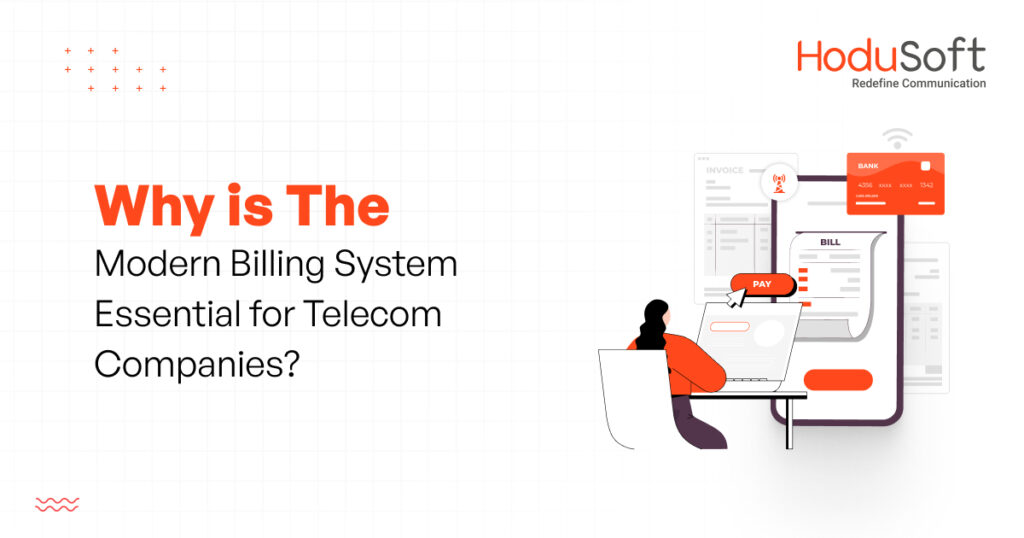5 Ways Multi-Tenant PBX Software Can Improve Your ISP Business
In the last few years, a lot has changed the way individual users access the internet. The launch of 5G technology, the rise of mobile apps, the popularity of social media and instant messaging, and many more factors increased internet consumption by leaps and bounds.
Be it shopping, studying, working, or staying connected with friends and family, people are using the internet more than ever before.
With remote working (and remote learning) becoming the new norm, the demand for uninterrupted high-speed internet increased considerably.
In such a scenario, providing uninterrupted high-speed internet connection is no longer a novelty, but a basic necessity to stay in the business.
An Internet Service Provider (ISP) must provide the following things to meet its client’s needs and gain a massive competitive edge over competitors.
- High-speed browsing experience
- A wide range of bandwidth options
- Uninterrupted internet connection
- Unlimited extensions
- Zero downtime
- Competitive price plans
- Easy access to analytics and reports
- 24/7 customer support
But the thing is many ISPs can’t provide all the listed things seamlessly and cost-effectively until and unless they have the right technology to tick all the boxes and provide a wide range of internet services and bandwidth options to succeed in such a competitive landscape. One such technology is multi-tenant IP PBX software!
At HoduSoft, we have helped many ISPs with our sophisticated multi-tenant IP PBX software. If you are an established ISP or a business looking to provide broadband services, then this blog post is just for you.
Here we have discussed everything about ISPs, the industry overview, their challenges, their relationship with multi-tenant IP PBX software, and the five ways multi-tenant IP PBX software can enhance your ISP business.
What’s an ISP?
As discussed above, ISP is the acronym for Internet Service Provider. The term became popular in 1989 after Brookline-headquartered company ‘The World,’ the first internet service provider in the United States, started to provide internet services commercially.
An ISP can also be referred to as an internet network service provider (INSP), a storage service provider, or an information service provider depending on the services offered by the company.
Apart from internet access, the internet services provided by ISPs can include:
- Internet transit: The service of allowing network traffic to cross or “transit” a computer network, usually used to connect a smaller ISP to the larger Internet.
- Domain registration: The service of acquiring and reserving a domain name on the Internet for a certain period, usually one year.
- Web hosting: The service of hosting websites for clients. In this, ISPs offer the facilities required for them to create and maintain a site and make it accessible on the World Wide Web.
- Usenet services: This entails sharing large files between users. Contemporary Usenet news servers have sufficient storage capacity to archive years of binary content. Individual users use the service to store backup data.
- Email services: Some ISPs also provide users with free email accounts and equip them with specialized tools to send bulk emails.
- Browser packages: This allows users to download files, launch websites, and find broken links.
- Colocation services: This provides a data center to retail customers where they can rent equipment, space, and bandwidth.
Serving as the gateway (or an access point), an ISP enables its users to access everything available on the internet.
To quote noted American journalist Bill Keller, “Anyone with an Internet Service Provider can be a pundit or whatever they want.”
Overview of the ISP industry
Even though the ISP industry is relatively nascent, it’s growing at a steady rate. When Internet service first began, it was originally confined to government agencies, research laboratories, and specific departments of universities.
In the 80s, service providers such as America Online (AOL) and CompuServe started to provide limited access to the internet.
In 1989, Australia was the first country to have commercial internet service provided by some businesses. The same year, in November, “The World” became the first commercial ISP in the US. Since then, the boom of ISPs started and thousands of companies of different sizes have joined the bandwagon to provide fast, affordable, and reliable internet services.
As per a recent report published by EINPresswire, the market size of the global ISP industry is projected to grow at a compounded annual growth rate of 3.9 percent from USD 404.8 billion in 2023 to USD 587.9 billion by 2033.
In another report by IBISWorld, a Manhattan-based market research company, the market size of the ISP industry in the US has grown 2.6 percent on a year-on-year basis between 2017 and 2022. As per the same source, as of 2023, there are 797,174 global ISPs, which is an increase of 5.1 percent from 2022.
But despite the promising numbers, there needs to be a rise in the number of ISPs. As iconic business magnate Richard Branson once said, “It’s worrying to think more than half the world’s population lacks internet access and therefore lacks an equal opportunity to improve lives.”
Challenges faced by ISPs
Challenges are nothing new to ISPs. But in the last few years, the service providers are facing many additional challenges. Some of them are listed here.
1. Fluctuation in Internet usage
ISPs that provide internet do witness wild fluctuations in internet usage several times a day. That usually happens during peak working hours when a lot of people use huge packets of internet for their work.
It also happens during prime time (between 9-10 pm) when a lot of people watch their favorite news shows, popular series, talk shows, podcasts, and other educational and entertaining content using the internet.
2. Handling multiple customers
One of the biggest challenges for many ISPs is handling multiple customers across diverse geographic locations. Let’s say an ISP, which is headquartered in Manhattan, can have a customer base in several areas in and around New York City.
If the ISP doesn’t have a proper management system then it can be difficult to efficiently handle inquiries and service requests from a large customer base.
3. Multi-branch operations
Many ISPs also have multi-branch operations. Let’s take the hypothetical Manhattan-based ISP for example. Apart from providing internet services from its Manhattan facility, it also has offices in Newark in New Jersey, Brighton in Massachusetts, Newfield in Connecticut, and Burlington in Vermont.
With multi-branch operations, the ISP needs to ensure seamless services for its customers and connectivity between locations.
4. Data security concerns
ISPs face huge risks of cyberattacks and data breaches. A survey conducted by the Internet Services Providers Association found that more than 90 percent of ISPs come under some form of attack.
Another study found that with 1,372 attacks per organization per week in 2022, the ISP/MSP industry registered a surge of 28 percent in cyberattacks! Also, a recent FTC staff report found many ISPs collect and share far more data from their users. ISPs need to take strong steps to protect themselves from cyberattacks and data breaches.
5. Billing and payment
While dealing with multiple customers across multiple locations, many ISPs often find it challenging to have efficient automated billing systems and secure payment gateways in place.
This not only complicates the bill payment process but also increases the chances of late payment and default.
6. Lack of flexibility in usage options
Many ISPs struggle to provide flexible usage options to customers with different needs and preferences. Not using reliable and high-quality software solutions and well-defined rate structures can impede ISPs to provide flexible options to customers and affect their business.
That’s why present-day service providers should create different user groups and provide them the autonomy and flexibility to access the internet as per their needs.
7. Competitive market
The ISP industry has become highly competitive. Many service providers are lowering prices, offering more bandwidth, and providing more value-added features to attract and retain customers.
In such a scenario, an ISP that has a competitive advantage such as unlimited extensions or any other cutting-edge feature has greater chances of succeeding.
8. Changing customer expectations and evolving technology
In the last few years, customers’ behaviors and expectations have changed dramatically. At the same time, advancements in technology are happening at a breakneck speed.
Faster internet speeds, uninterrupted connectivity, and lower latency are huge in demand. Considering these factors, ISPs need to keep abreast with the latest trends and expand their offerings.
9. Regulatory compliance
Complying with various legal requirements concerning internet access, data privacy, and net neutrality is one thing. But navigating through complex regulatory frameworks and knowing what to comply with is extremely important.
This is where many ISPs face challenges. ISPs must go through various regulations such as General Data Protection Regulation (GDPR) or California Consumer Privacy Act (CCPA) minutely and make sure that they comply with those.
10. Lack of reliable multi-tenant solutions
Many ISPs face the challenge of finding reliable multi-tenant solutions in the market. A robust multi-tenancy architecture empowers ISPs to define and manage various client bases and user groups as multiple tenants and sub-tenants with predefined permissions. But the lack of multi-tenancy features acts as a major impediment for ISPs.
ISPs and multi-tenant IP PBX software
Now that we have discussed the implications of multi-tenancy features for ISPs, it’s time to discuss the significance of multi-tenant IP PBX software for ISPs. The invention of multi-tenant IP PBX software proved to be a boon for many ISPs.
It enabled them to efficiently manage and provision phone systems for multiple clients. That’s why selecting the right multi-tenant IP PBX software can mean the difference between success and failure for MSPs.
ISPs are among the biggest users of multi-tenant IP PBX software. They use multi-tenant IP PBX software to customize solutions for different tenants. It helps them provide feature-rich and scalable communication solutions to businesses of all sizes, including small and medium businesses.
By leveraging multi-tenant IP PBX software, ISPs can not only enhance their service offerings but also attract new customers and generate recurring revenue.
As per an Analytics Market Research report, the worldwide IP PBX market size is expected to grow at a compounded annual growth rate (CAGR) of 17.3 percent from USD 20.19 billion in 2022 to USD 85.14 billion by 2031. The growth is attributed to increasing demand for IP PBX systems by ISPs, MSPs, ITSPs, and many other service providers.
Understanding multi-tenant IP PBX software
Multi-tenant IP PBX software is a cloud-based solution using which multiple clients (tenants) can share the same robust infrastructure while maintaining their separate spaces to safeguard data and interactions.
Every tenant that uses a multi-tenant IP PBX system has its customized dashboard, which displays crucial customer information, data usage, and other vital information. This empowers ISPs to understand their customers’ needs and provide the right service.
Multi-tenant IP PBX software also seamlessly integrates with existing applications used by the ISPs. This eliminates the need for using separate tools.
Using multi-tenant IP PBX software, agents can easily share resources, support one another, and collectively enhance the software through bug fixes and the addition of new features. It fosters a collaborative environment.
Five ways multi-tenant IP PBX software benefit ISPs
Multi-tenant IP PBX software provides many benefits to ISPs. Here are five ways multi-tenant IP PBX software benefits ISPs.
1. By providing huge scalability and flexibility
Let’s put the record straight: scalability and flexibility are extremely critical for ISPs. It’s not uncommon to see many ISPs that start small grow by leaps and bounds quite fast.
The IP PBX software they use should be able to accommodate their needs and keep pace with their growing operations.
The scalability and flexibility offered by multi-tenant PBX software make it an ideal solution for ISPs of all sizes (whether it’s a small regional ISP or a large national provider.)
The multi-tenant architecture allows ISPs to manage multiple clients, each with their own virtual PBX system, from a single platform.
Many multi-tenant IP PBX software comes with unlimited extensions. This not only streamlines operations but also enables you to onboard new customers rapidly and efficiently, thus expanding your market reach.
2. White-label branding and customization
Not just technology, every ISP must also embrace brand building and create a distinct brand identity. And leveraging sophisticated multi-tenant IP PBX software is one the best ways to take care of both!
For many ISPs, showcasing their brand is extremely important for business success. Every ISP would like to showcase its brand to its clients and resellers.
The white-label branding option in multi-tenant PBX software enables ISPs to customize the platform’s user interface with their logo, color scheme, and brand identity.
This level of customization enhances their business’s credibility and professionalism, which can enhance their brand identity in a competitive market.
3. Advanced call analytics and reporting
“Information is the oil of the 21st century, and analytics is the combustion engine.” These are the words of none other than Peter Sondergaard, executive VP of research and advisory at Gartner.
Every ISP must make data-driven decisions not just to survive but also to thrive in today’s dynamic environment.
That’s where multi-tenant IP PBX software comes in! It provides robust call analytics and reporting features that offer valuable insights into call traffic, call durations, peak call times, and more.
By leveraging this data, ISPs can optimize their telephony services, allocate resources efficiently, and identify areas for improvement in customer service.
Moreover, this information empowers ISPs to offer tailored solutions to businesses, catering to their unique communication needs and driving customer satisfaction.
4. Diversify revenue streams
“Diversification and globalization are the keys to the future.” Fujio Mitarai, the chief executive at Canon, was totally on point when he said these words.
When almost all organizations are looking for various ways to diversify their revenue streams, how can ISPs be left behind?
ISPs are continually seeking new revenue streams beyond traditional internet services. Multi-tenant IP PBX software presents an excellent opportunity to diversify offerings and capitalize on the growing demand for reliable VoIP telephony services.
By providing advanced communication solutions, including virtual phone systems, voicemail, call forwarding, and call recording, ISPs can attract a broader customer base, including businesses and residential users alike.
These value-added services can become a new revenue source, helping to bolster your business’s bottom line.
5. Enhance customer retention and loyalty
Customer retention is vital for ISPs to maintain steady revenue and build long-lasting relationships with subscribers. Multi-tenant PBX software enables ISPs to offer feature-rich communication tools that go beyond standard internet services.
By bundling VoIP telephony with existing internet plans, you can create compelling packages that keep customers engaged and loyal. The convenience of having all services under one provider fosters a sense of trust and reduces the likelihood of customers switching to competitors.
Wrapping up,
For an ISP, the right multi-tenant IP PBX software can work like magic. It can accommodate multiple tenants and provide uninterrupted and fast broadband services to customers. That’s why selecting the right multi-tenant can make or break an ISP’s success.
At HoduSoft, we have helped many ISPs in streamlining their operations and services with our HoduPBX – IP PBX software. Our software has many unique benefits such as unlimited extensions, reseller module, SIP trunking, and more. It also enables you to bring your own trunk, Direct Inward Dialing (DID), and server. For a free demo, contact us today!



